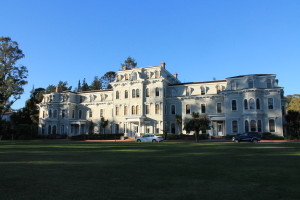
Welcome to our new students, staff, and faculty, and to our returning community members.
2017 is the 100th year in print for The Campanil, the student newspaper at Mills College. It has also been the summer when journalism itself has been continuously invalidated by the presidential administration, deeply institutional racism that has always existed in this country is manifesting in gatherings of violent outbursts, and the college’s tenure is in question. It was also, ironically, the 50th anniversary of the summer of love that almost seems to haunt the Bay Area as a hyper-marketed, highly romanticized ideal.
In the wake of Charlottesville happening on the campus of University of Virginia, a “liberal” campus, I wanted to reflect on Mills’ own history in this special issue for both our centennial, and the campus Financial Stabilization Plan. If the newspaper is doing its job correctly, it needs to be an honest account of this institution’s history.
Upon researching the archives of the library, it became clear to me that this institution has a long history of ills such as racism and classism, to name a few. In the first bound journal I picked up from the first issue of The Weekly, in 1917, the very first page I turned to, the first article I saw was about a campus minstrel show, with some horrendous racial epithets. In the 1970s, the nazi party was invited on campus to present a different “side” for a political party information event. It becomes more apparent the institutional history we as a college come from are deeply hidden, just as we try to hide the history of injustice in this country. It is not uncommon knowledge that this college started as a space for upper-class white women (and just white women in general). In the same way that keeping up glorified accounts of the confederacy allows white supremacy to persist, not talking about our problematic history is just as harmful. As much as Mills markets our social justice spaces, where is the proof from the institution? What institutional framework would stop a white nationalist gathering from happening on campus while most Mills students are gone?
Putting the institutionalized racism in the context of our school and history is also connected to the FSP. It has never been precedent to report over the summer, because so few students are around and so little campus news happens, but the staff that was here over the summer did our best with the resources we had to do thorough, timely reporting on the drastic cuts to our campus community, in this 100th year of our paper’s existence. This act of cutting programs, staff, faculty and more while students were not present shows a larger issue of how out-of-touch the institution is with the students it educates and claims it “protects.” Neoliberalism on our campus can be just as pervasive to the fibers of justice as the fascism that has presented itself in our presidential administration.
As we go through this school year, The Campanil adviser situation in limbo, the journalism department, ultimately the school newspaper itself, and in a more international tone, the rest of our tumultuous political moment, where do we go from here? Any radical progress made by this college was made by the students, faculty and staff as a collective, pushing for change. Not an announcement from administration. How do we translate our collective voices to fight against harmful institutions? The Campanil staff is dedicated to putting truth to power, even within our own campus climate, and we welcome the voices of our campus community to contribute.


